|
|||||||||||||||||||||||||||||||||||||
|
|
Waste Recycling in Neuburg-Schrobenhausen | ||||||||||||||||||||||||||||||||||||
|
Waste management in the process of change
Waste management in the district of Neuburg-Schrobenhausen Local waste management undergoing fundamental change Local waste disposal in the district of Neuburg-Schrobenhausen has gone a long way during the past fifteen years. While previously the focus was on waste disposal (dumping on disposal sites or incineration of waste), it is the concept of closed-cycle waste management" that prevails today, i.e. recycling takes priority over disposal. In the district of Neuburg-Schrobenhausen, the main goal was to reduce the volume of household waste produced to a level that would make it unnecessary to build a new waste disposal site or to enlarge the existing incineration plant. Today, this goal has been achieved. 1990 The beginnings 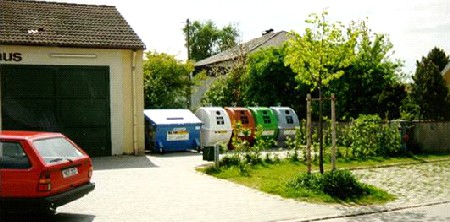
1990 The beginnings: Systematic waste separation and recycling of glass, paper and scrap metal started with the setting up of the first collection containers. Up to the end of the 80ies, waste recycling did not play an important role in the public opinion. All households had large-capacity waste bins, weekly waste collection was the rule. Selective collection of recyclables was limited to glass, paper and scrap metal as can be seen on the title photograph of 1913. Waste incineration charges were relatively low: 1989: 56 euros per ton 1990: 66 euros per ton The costs of waste disposal were financed via separate per-capita charges to be paid by the residents in the district. Staff employed by the local waste management authority: Administration 1 person 1991 The first step 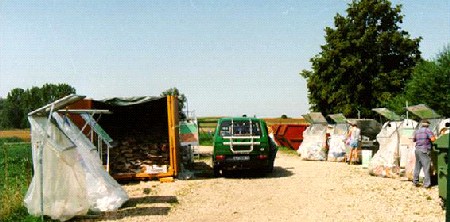
1991 The first step: Small recycling yards often of a rather provisional nature were set up in all communities and in the town of Schrobenhausen. Beginning in 1991, small collection areas (recycling yards) were set up. Frequently, they were located far outside the village or town centres. Scrap metal, compostable garden waste, plastic foils and plastic containers were collected there. As from end-1992, people could also bring aluminium packagings, Tetra-Pak cartons and styrofoam. By the end of 1992, each village and each town in the district had at least one recycling yard. Waste incineration charges increased approx. 1992: 92 euros per ton 1992: 107 euros per ton Staff employed by the local waste management authority: Administration 7 persons, Collection areas 35 persons 1993 The decision Increasing volumes of household waste resulted in higher disposal costs. They also required larger incineration plants and new waste disposal sites which nobody wanted to be built in their neighbourhood. The alternative was to avoid waste and to recycle as much waste as possible. New legal provisions covering the recycling of packaging waste became binding throughout Germany and opened up new perspectives for the reduction of household waste. The DSD (Duale System Deutschland) was introduced Germany-wide to coordinate the return and reuse of packaging materials. When making a decision as to which collection system would be best suited for the district Neuburg-Schrobenhausen, the pros and cons of the different systems had to be considered. Collection in recycling yards - Materials must be separated at home - Everybody must be involved - The system provides employment, in particular numerous part-time jobs - The communities benefit from the added value - The system is ecologically more efficient 
Collection at the doorstep and separation in automated sorting plants - Having non-separated waste in bags or bins collected is convenient - The system provides but a few jobs - Sorting facility manufacturers and energy providers benefit from the added value The district of Neuburg-Schrobenhausen made its decision of favour of the „ecycling yard system, not least because of the employment this system provides. 1993 A major step forward In 1993, the local waste management authority (Landkreisbetriebe Neuburg-Schrobenhausen) was set up which has been responsible for local waste management in the district ever since. At the same time, the residents of the district of Neuburg-Schrobenhausen were invited to bring all types of packaging waste to the collection areas free of charge. To this day, this collection of recyclables is financed by the DSD via the sale of the packaging waste collected. All other recyclables are sold on the market to cover the costs of the collection system. In the same year, an extension plan for the existing system of collection areas was put in place. New and larger recycling yards were built. From then on, all types of packaging materials (plastic, styrofoam, wood and earthenware) were collected and not only paper, glass, bio-degradable garden waste and scrap metal. To make sure the materials are well sorted, each recycling yard is staffed with at least 3 employees in each shift. At that time, a significant increase in the waste incineration charges was to be expected because of the costly extension and modernization of the incineration plant. In 1993, waste incineration charges increased approx. 81 % : 1992: 107 euros per ton 1993: 194 euros per ton Staff employed by the local waste management authority: Administration 12 persons Central plant 12 persons Collection areas 190 persons To be able to keep the cost increase within acceptable limits for the residents in the district a bio-composting plant was planned which went into service in 1995. 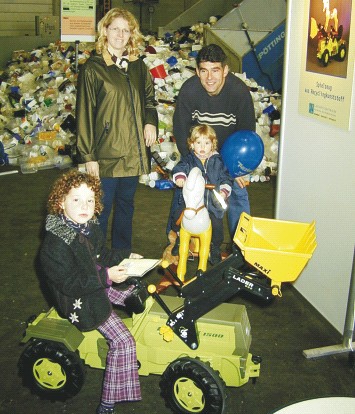
2000 Another step forward In 2000, waste incineration charges increased 25% as compared with 1994: 1994: 214 euros per ton 2000: 268 euros per ton Some figures to remember: In 1990, waste incineration charges amounted to 66 euros per ton; by 2000, they had quadrupled. Despite this increase, the waste collection charges to be paid by the residents have remained stable at the 1997 level thanks to higher recycling rates and smaller volumes of residual household waste. To compensate the 2000 increase in waste incineration charges further measures aimed at reducing the volume of household waste became necessary. A further savings potential was offered by the recovery of so-called bulky waste. As early as in 1997, pieces of furniture made from wood or wooden composites were collected separately from other bulky waste for economical reasons. This furniture was no longer incinerated but recycled to a large extent by the chip board industry. The remaining bulky waste still contained large household items in plastic materials, carpets, upholstered furniture and mattresses as well as electronic scrap. All these materials were now collected separately and recycled. Like in the case of waste wood, no profit could by earned from recycling of this type of waste. On the contrary, charges had to be paid. However, these amounted to only 30 % to 50 % of the waste incineration charges. 2005 Nowadays Presently, the district of Neuburg-Schrobenhausen has more than 36 collection areas in 16 communities and 2 towns, i.e. there is one recycling yard per 2,600 residents. The wide acceptance of the self-delivery system at collection areas is reflected, among other things, in the lively attendance of the population at informational events on their recycling yard. Staff employed by the local waste management authority: Administration 20 persons Central plant 23 persons Collection areas 244 persons 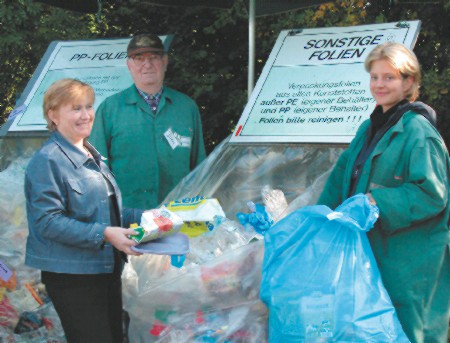
Ecological aspects of waste separation The high quality of the separated and sorted waste materials ensures the ecological success of the recycling yard system. These materials can thus be used for new products. This saves raw materials, avoids further dumping sites and reduces the emissions from waste incinerator plants. The commitment of everybody helps ensure a better future. 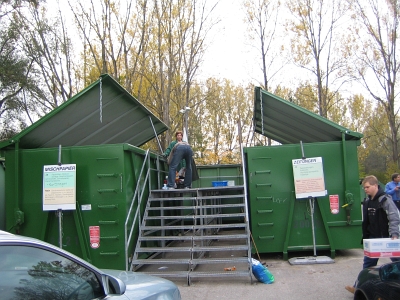
Social aspects of waste separation The annual net income of all employees working on the recycling yards amounts to approx. 600,000 euros, money that means purchasing power for our district. Building and maintaining the recycling yards provides work for medium-size companies in our district. Thus, the recycling yards are not only a boost for the local building industry but provide a lot of jobs and an additional income for many part-time employees. 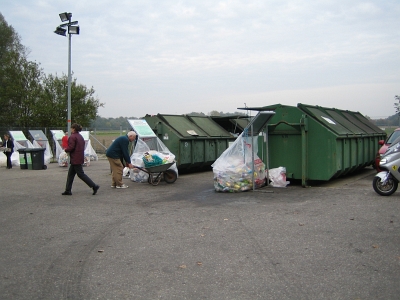
Economic aspects of waste separation The disposal of household waste is expensive: In 2004, the costs amounted to 250 euros per ton. The waste management system in the district of Neuburg-Schrobenhausen has proved a success not only in terms of ecology but also in terms of cost-effectiveness. This directly reflects in the waste disposal charges. In January 2002, charges were reduced by 10 % and in January 2005 by another 8 %. 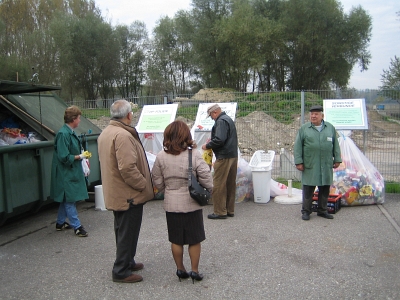
2006 Implementation of the EU directive As early as in 2000, the district of Neuburg-Schrobenhausen started to separately collect electronic scrap and recycle it. On March 24, 2006 the Electrical and Electronic Equipment Act which is based on EU directive 2002/95/EG (Directive on waste electrical and electronic equipment – WEEE) will enter into effect. Contrary to previous practice, this involves increased organizational efforts and causes higher costs. 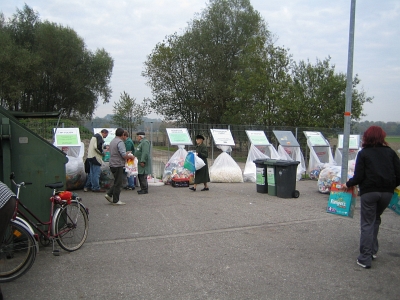
The law requires such scrap to be collected sorted by five different categories: - large household appliances - refrigerators and deep freezers - IT equipment including telecommunication and entertainment electronics equipment - small household appliances - gas-discharge lamps 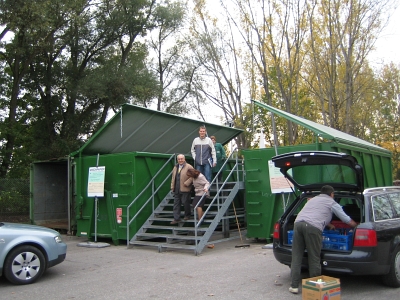
The waste management policy in the district of Neuburg-Schrobenhausen - helps protect the environment - saves resources - provides employment - creates added value in the district 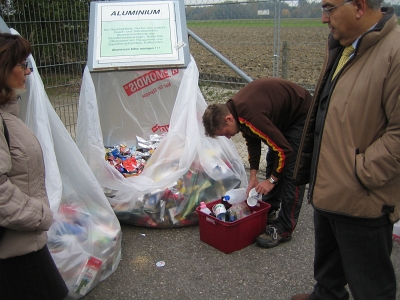
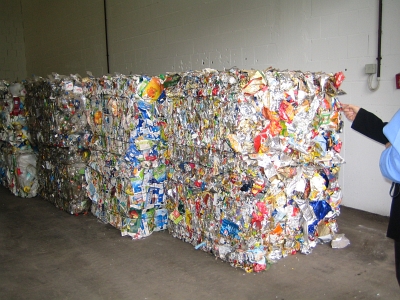
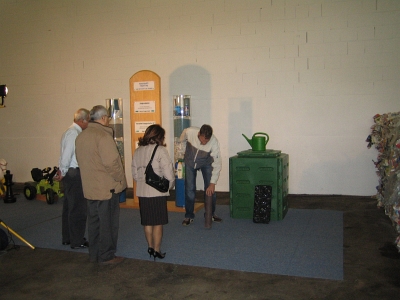
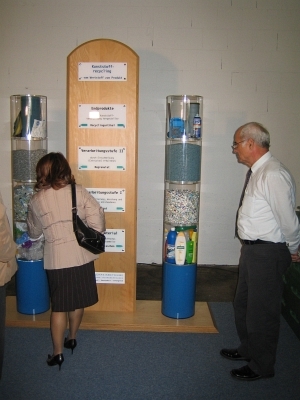
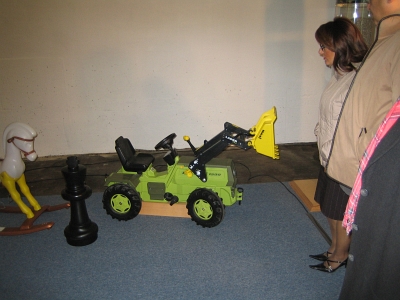
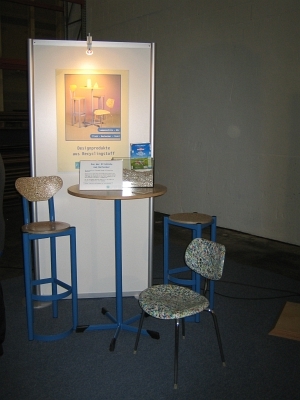
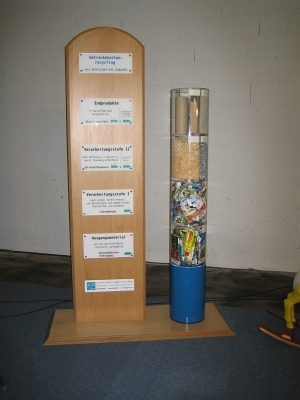
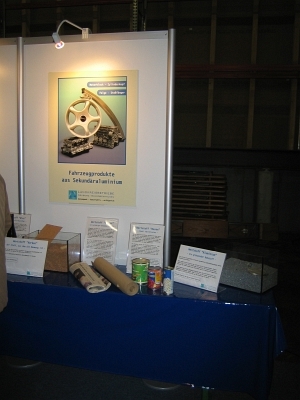
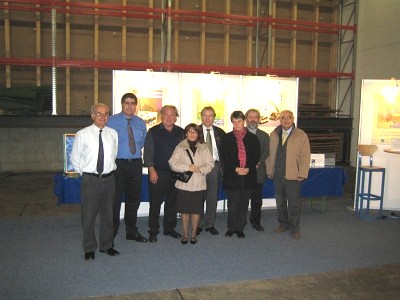
|
|
|||||||||||||||||||||||||||||||||||


